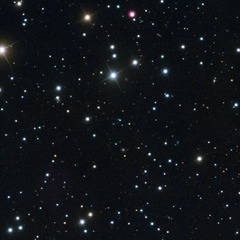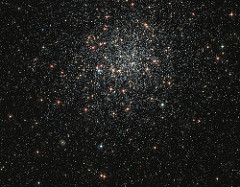Science Olympiad – Astronomy Deep Sky Objects Image Set – Flashcards
Unlock all answers in this set
Unlock answersquestion
J075141/J174140

answer
Two white dwarf stars that are approaching AM-CVn style collision; theorized reactions include coalescence into a larger white dwarf or neutron star, as well as a type IA supernova event
question
NGC 2392
answer
The Eskimo Nebula; strangely symmetrical planetary nebula, proposed as a result of a companion star/binary system
question
SNR 0509-67.5
answer
Type IA supernova remnant, young remnant(400 yo) expanding rather quickly (11,000,000 mph)
question
Omicron Ceti
answer
Red giant variable star that is part of a binary system with a white dwarf, where mass transfer is taking place, and will eventually cause a type IA supernova event
question
SN 2011fe
answer
Extremely far away; type IA supernova event, that demonstrates the principles of these events
question
SNR G1.9+0.3
answer
Youngest type IA in the Milky Way, taking place just over 100 years ago
question
NGC 2440
answer
Hottest known white dwarf stellar core, surrounded by a complex planetary nebula
question
Henize 2-248
answer
Planetary nebula surrounding a binary system of white dwarves, which exceed Sekhar's limit, and will ultimately result in a type IA supernova event
question
Henize 3-1357 (Stingray Nebula)
answer
Youngest planetary nebula on record; structural features and symmetry thought to be a result of a companion star nearby
question
Tycho's SNR
answer
A recent event observed several times, that gives new information relevant to type IA supernova events; result of thermonuclear explosion from mass accretion
question
SS Cygni
answer
A dwarf nova system with a red and white dwarf; dwarf nova instability takes place in the accretion disk and results in repeated flares (fairly periodically in light curve)
question
Messier 15 (M15)
answer
About 35000 light years away; a globular cluster containing about 100,000 stars, showing the stellar evolution of young stars within such structures
question
HM Cancri
answer
Binary system extremely close with remarkably fast orbit (five minutes), as they approach one another, coalescing into a white dwarf or neutron star
question
Sirius A/B
answer
A binary system of a larger main sequence star and white dwarf companion
question
NGC 1846

answer
Another globular cluster within the Milky Way; exemplifying the diversity of stars within globular clusters, and showing metallicity differences in populations
question
Type IA Supernova
answer
An event in which a binary system including a white dwarf makes contact, allowing for mass transfer to the white dwarf; As this approaches a critical mass, the star releases a violent outburst of mass and energy
question
AM CVn Systems
answer
Fast-orbiting, hot and dense binary systems that may produce gravitational waves, and will eventually merge into a white dwarf, neutron star, or IA supernova event



